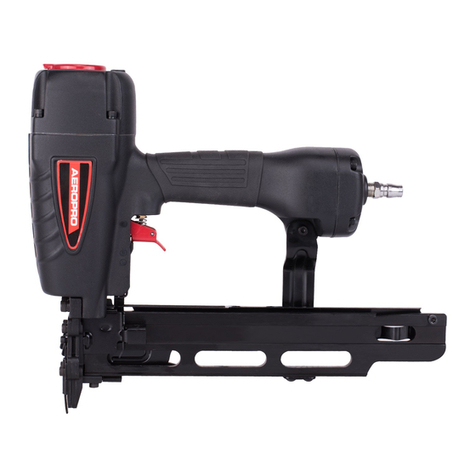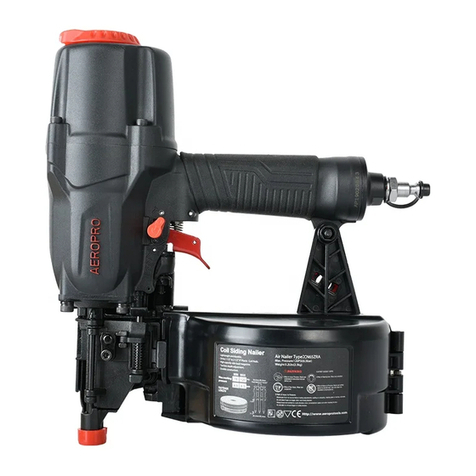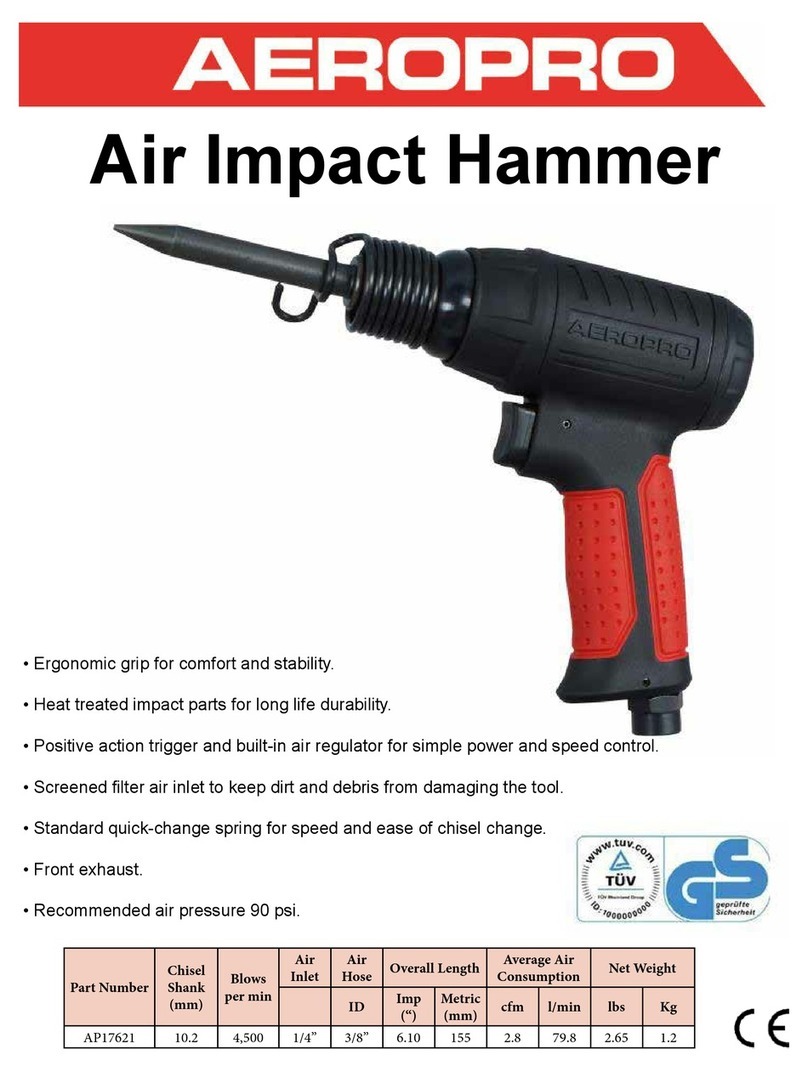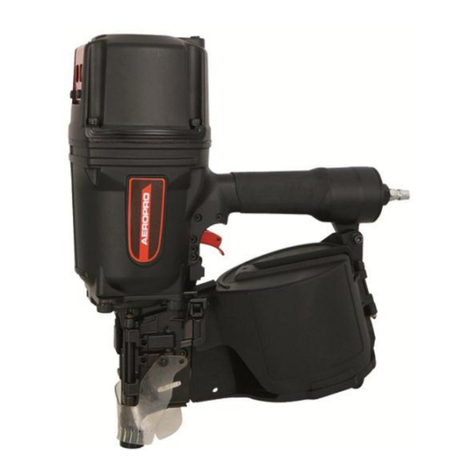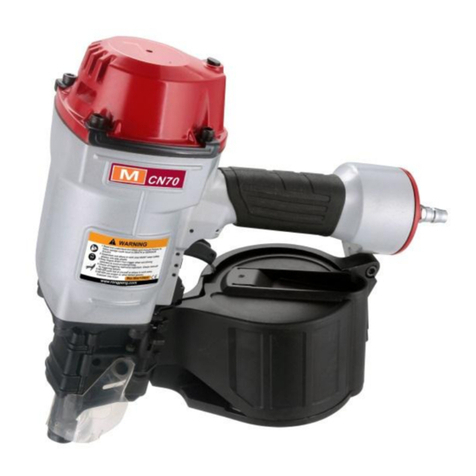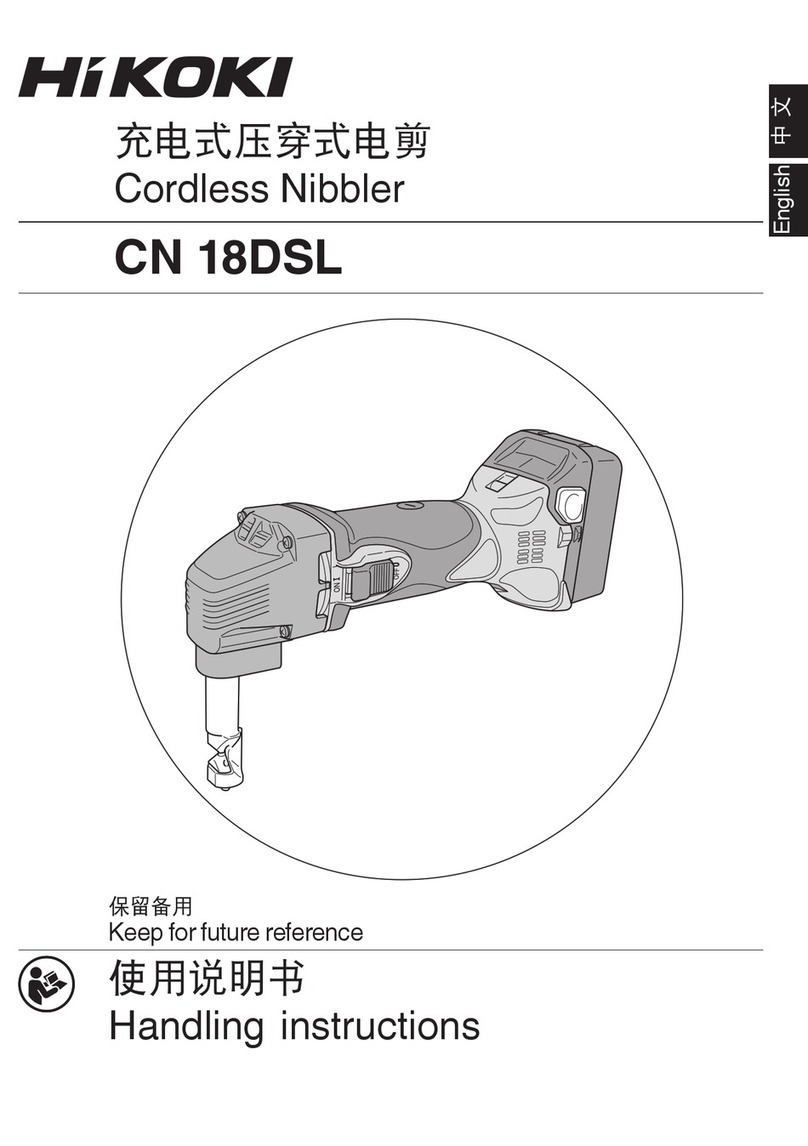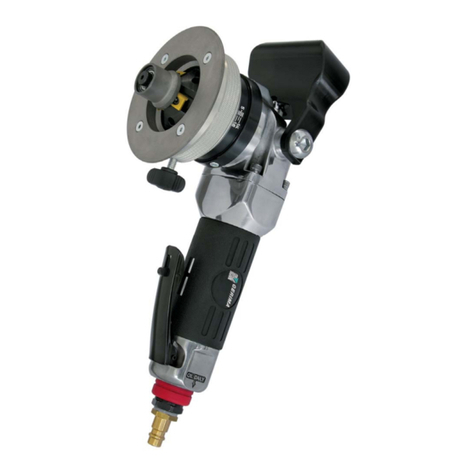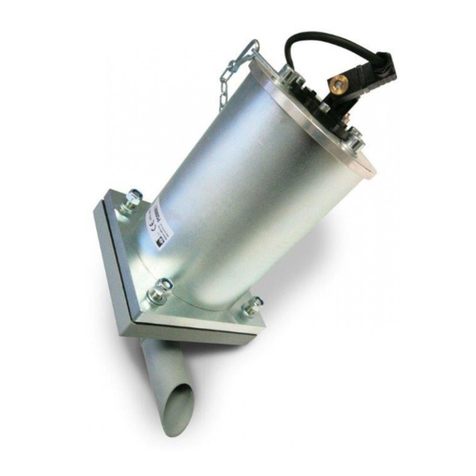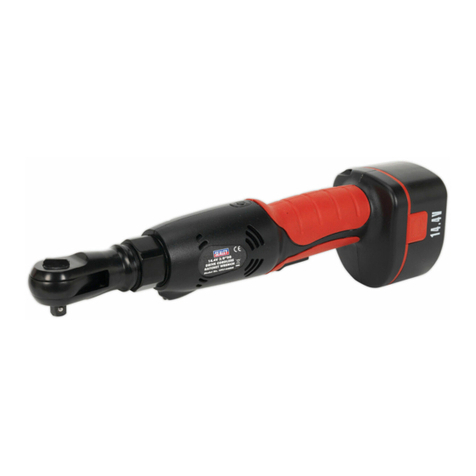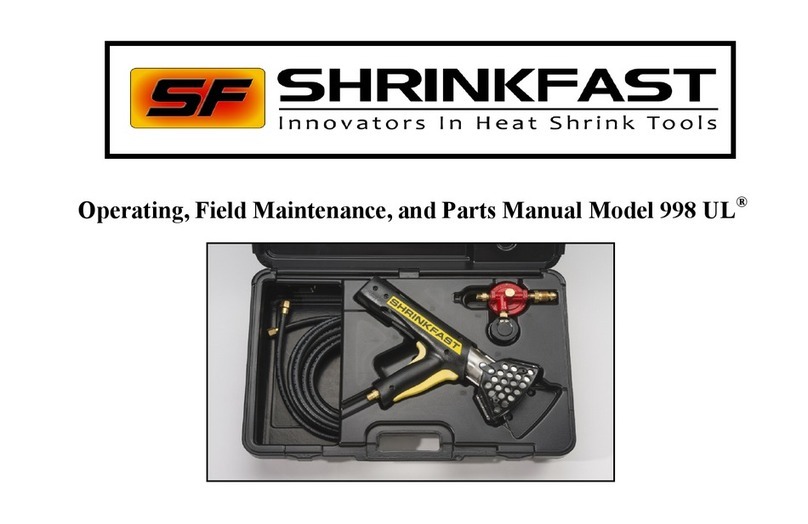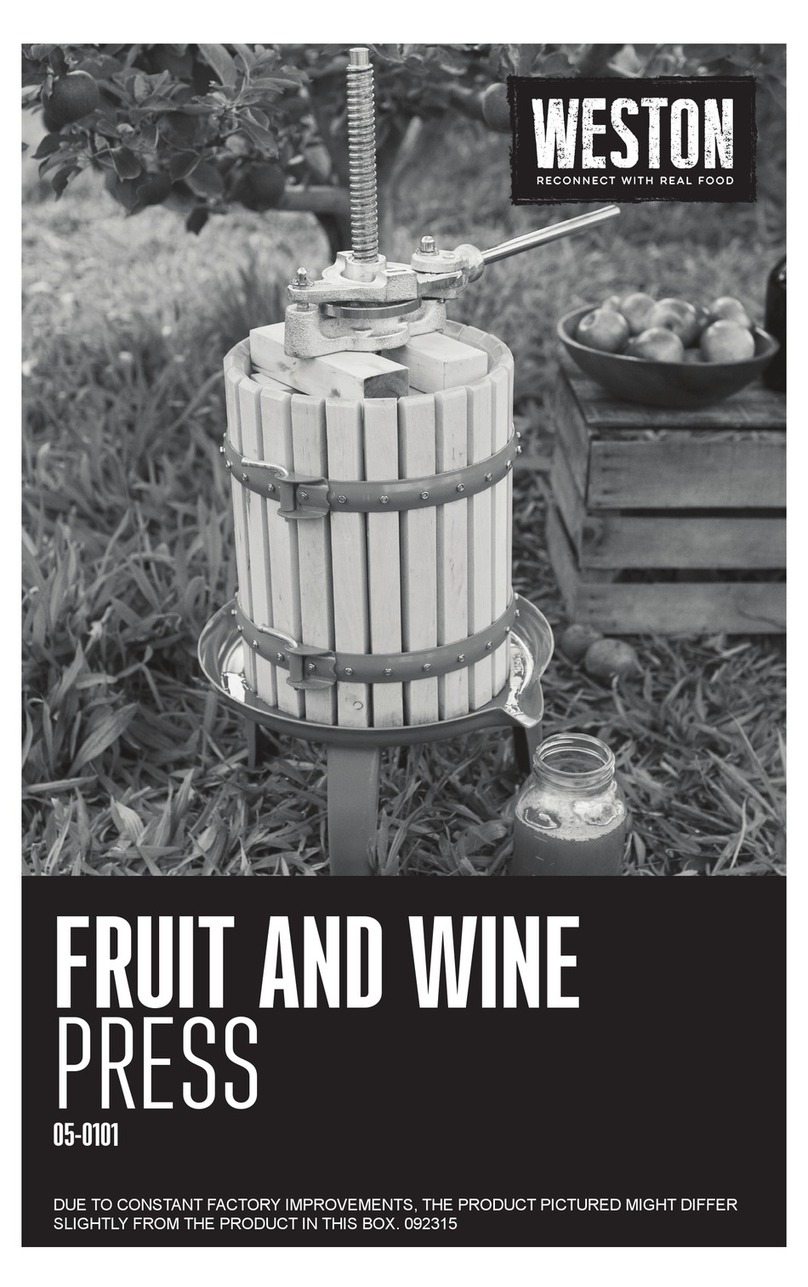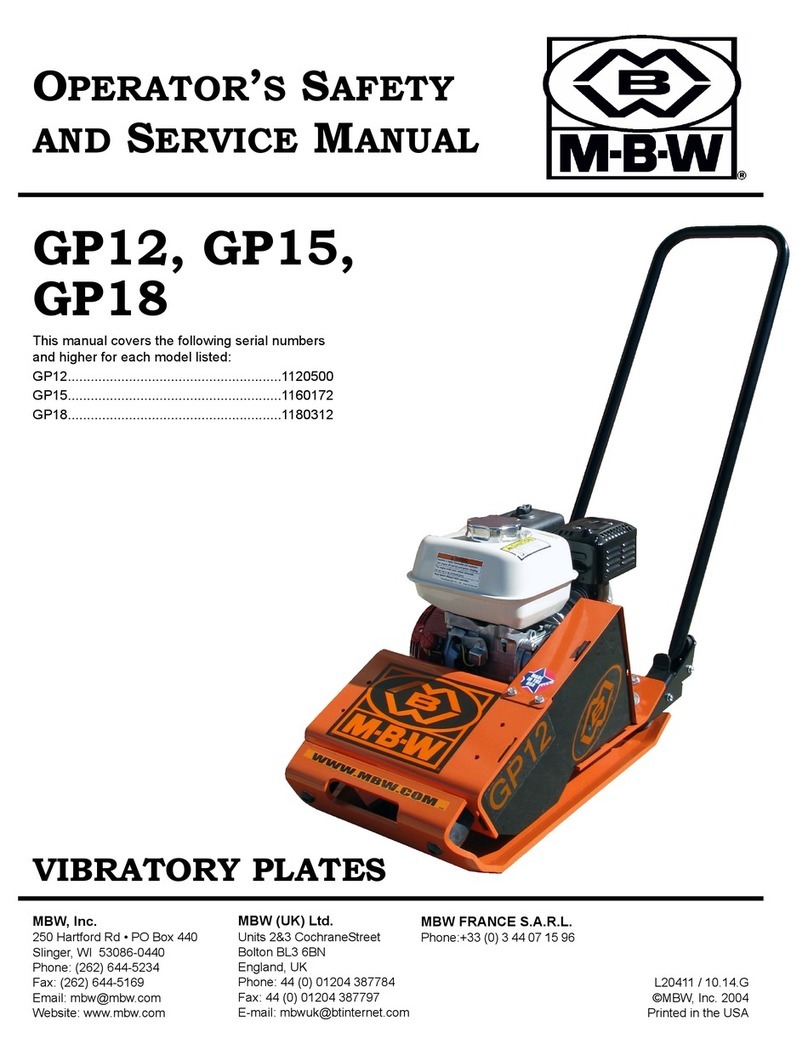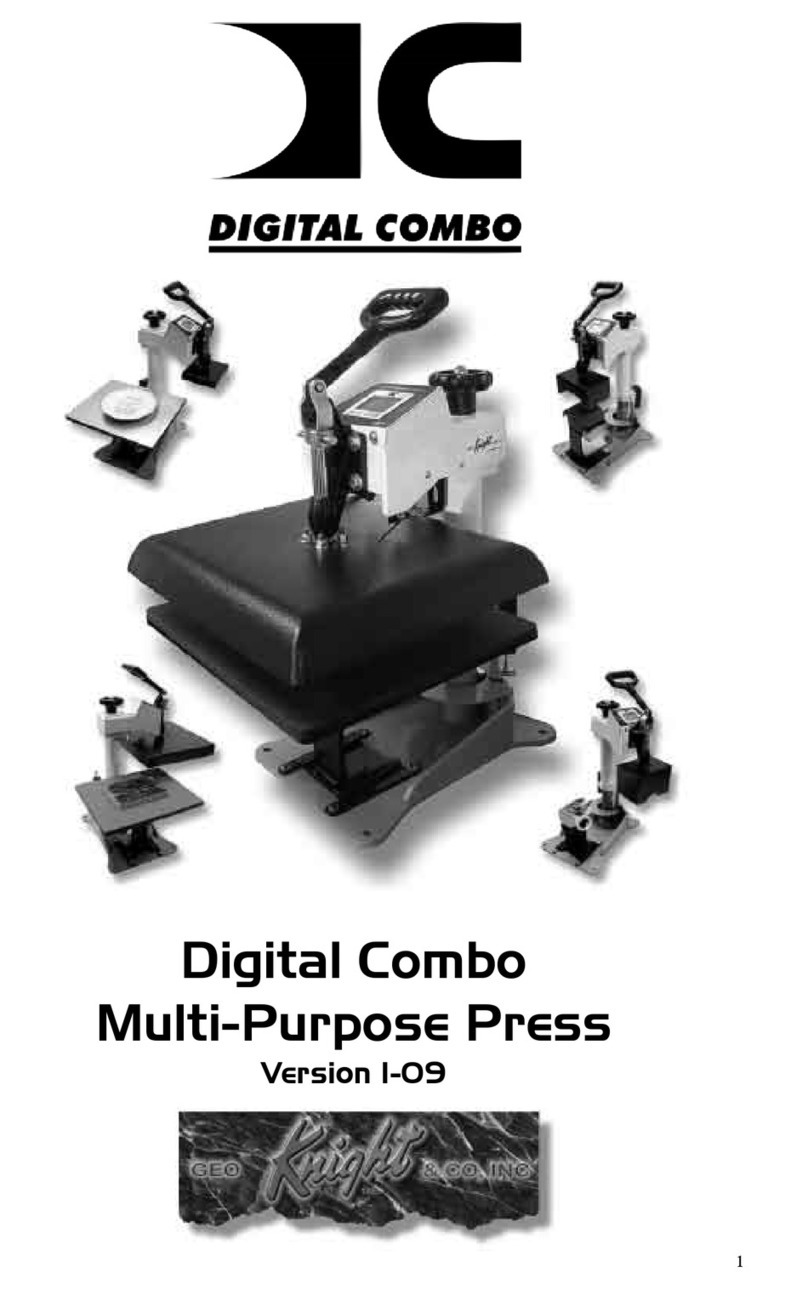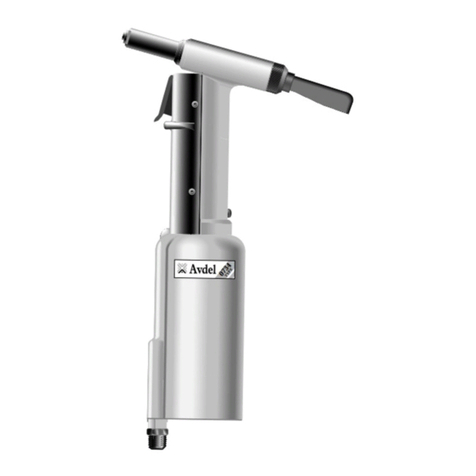Aeropro RP17411 Instruction Manual

1
Ratchet Wrench 17411
Operating Instruction and safety manual
3/8”Ratchet Wrench
1/2”Ratchet Wrench
Model:17411
ting
Residual risks
Even when the tool is used as prescribed it is not possible to eliminate all residual risk factors. The
following hazards may arise in connection with the tool’s construction and design:
1. Damage to lungs if an effective dust mask is not worn.
2. Damage to hearing if effective hearing protection is not worn.
3. Health defects resulting from vibration emission if the power tool is being used over longer period of time or
not adequately managed and properly maintained.
4. Wear eye protection.
IMPORTANT:
Upon receipt of the product,
read and follow all safety rules,
operating instructions before first use it.
And retain thismanual for future reference.
2014
2013

2
Ratchet Wrench 17411
Technical Data
Square drive……………………………………………………………….…3/8”or1/2”(10mm or 13mm)
Free speed……………………………………………………………………………..……………160rpm
Max torque………………………………………………………………………………..50ft/lb(67.5N.m)
Avg. air consumption……………………………………………… 4cfm(114 l/min) or 2.7cfm(77 l/min)
Operating pressure…………………………………………………………………………...90psi(6.3bar)
Air inlet size……………………………………………………………………………….…………..1/4”
Air hose……………………………………………………………………………………………..3/8”ID
Weight…………………………………………………………………………………………...…..1.1 kg
A weighted sound pressure level LPA…………………………………….………….89.6dB(A) KPA=3 dB
Sound power level LWA………………………………………………….…………100.6dB(A) KWA=3 dB
ISO 28927-2 & EN 12096
Vibration in the handle ah,d………………………………………….………………..8.47m/s2 K=1.33 m/s2
Important Safety Rules
1. Follow all workshop safety rules, regulations, and conditions when using wrench.
2. Do not wear watches, rings bracelets or loose clothing when using air tools.
3. WARNING! Disconnect from air supply before changing accessories or servicing.
4. Maintain the wrench in good condition and replace any damaged or worn parts. Use genuine parts only.
Non-authorised parts may be dangerous.
5. WARNING! Check correct air pressure is maintained and not exceeded. We recommend 90psi.
6. Keep air hose away from heat, oil and sharp edges. Check air hose for wear before each use and ensure that all
connections are secure.
7. Only use impact sockets which are specifically designed for use with an ratchet wrench.
8. Wear approved safety eye/face shield, ear defenders, and hand protection.
9. WARNING! Due to the possible presence of asbestos dust from brake linings, when working around vehicle
brake systems we recommend you wear suitable respiratory protection.
10. Maintain correct balance and footing. Ensure the floor is not slippery and wear non-slip shoes.
11. Keep children and non essential persons away from the working area.
12. DO NOT use the wrench for a task it is not designed to perform.
13. DO NOT use wrench if damaged or thought to be faulty.
14. DO NOT use wrench unless you have been instructed in its use by a qualified person.
15. DO NOT carry the wrench by the air hose at yourself or others.
16. DO NOT direct air from the air hose at yourself or others.
17. When not in use disconnect from air supply and store in a safe, dry, childproof location.
General safety rules
maintaining, changing accessories on, or working near the assembly power tool for threaded fasteners.
Failure to do so can result in serious bodily injury.
Only qualified and trained operators should install, adjust or use the assembly power tool for threaded fasteners.
Do not modify this assembly power tool for threaded fasteners. Modifications can reduce the effectiveness of
safety measures and increase the risks to the operator.
Do not discard the safety instructions; give them to the operator.
Do not use the assembly power tool for threaded fasteners if it has been damaged.

3
Ratchet Wrench 17411
Tools shall be inspected periodically to verify that the ratings and markings required by this part of ISO 11148 are
legibly marked on the tool. The employer/user shall contact the manufacturer to obtain replacement marking labels
when necessary.
Operating Instruction
Description
Die cast aluminum body, Reversible, Rubber scuff guards on nose and back, Built –in –air regulator varies speed &
power, front exhaust, designed for removing and installing nuts and bolts. Also ideal for tire changing and general
assembling work and other workshop applications.
Projectile hazards
Failure of the workpiece, of accessories or even of the inserted tool itself can generate high-velocity projectiles.
-resistant eye protection during the operation of the assembly power tool for threaded
fasteners. The grade of protection required should be assessed for each use.
Entanglement hazards
jewellery, neckware, hair or gloves are not kept away from the tool and accessories.
-coated or metal-reinforced gloves.
-fitting gloves or gloves with cut or frayed fingers.
Operating hazards
The following apply.
ng crushing, impacts, cuts and abrasions
and heat. Wear suitable gloves to protect hands.
tool.
mal or sudden movements and have both hands available.
-and-stop device in the case of an interruption of the energy supply.
unscrewing.
Repetitive motions hazards
or other parts of the body.
whilst maintaining secure footing and avoiding awkward or off-balanced postures. The operator should change
posture during extended tasks, which can help avoid discomfort and fatigue.

4
Ratchet Wrench 17411
numbness, burning sensations or stiffness, these warning signs should not be ignored. The operator should tell the
employer and consult a qualified health professional.
Accessory hazards
The following apply.
inserted tool or accessory.
injuries.
threaded fasteners manufacturer.
ratchet-wrench-rated sockets in good condition, as poor condition or hand sockets and accessories
used with ratchet wrenches can shatter and become a projectile.
Workplace hazards
The following apply.
r causes of workplace injury. Be aware of slippery surfaces caused by the use of
the tool and also of trip hazards caused by the air line or hydraulic hose.
lines, can exist.
is not insulated against coming into contact with electric power.
., that can cause a hazard if damaged by use of the tool.
Dust and fume hazards
example, cancer, birth defects, asthma and/or dermatitis); risk assessment and implementation of appropriate
controls for these hazards are essential.
in a dust-filled environment.
should be correctly used and maintained in accordance with the manufacturer's instructions.
health and safety regulations.
Noise hazards
h noise levels can cause permanent, disabling, hearing loss and other problems,
such as tinnitus (ringing, buzzing, whistling or humming in the ears).
⎯e controls to reduce the risk may include actions such as damping materials to prevent workpieces
from “ringing”.
safety regulations.
nd maintain the assembly power tool for threaded fasteners as recommended in the instruction
handbook, to prevent an unnecessary increase in noise levels.
in good

5
Ratchet Wrench 17411
working order when the assembly power tool for threaded fasteners is operating.
prevent an unnecessary increase in noise.
Vibration hazards
erience numbness, tingling, pain or whitening of the skin in your fingers or hands, stop using the
assembly power tool for threaded fasteners, tell your employer and consult a physician.
as recommended in the instruction
handbook, to prevent an unnecessary increase in vibration levels.
-fitting sockets or extensions, as this is likely to cause a substantial increase in vibration.
onsumable/inserted tool as recommended in the instruction handbook, to
prevent an unnecessary increase in vibration levels.
from vibration is generally greater when the grip force is higher.
Additional safety instructions for pneumatic power tools
ure can cause severe injury:
before changing accessories or when making repairs;
an cause severe injury. Always check for damaged or loose hoses and fittings.
safety cables shall be used to safeguard against possible hose-to-tool and hose-and-hose connection failure.
-control and continuous-rotation tools, the air pressure has a safety critical effect on performance.
Therefore, requirements for length and diameter of the hose shall be specified.
Air supply
1. Ensure wrench air valve (or trigger) is in the “off” position before connecting to the air supply.
2. You will require an air pressure of 90psi, and an air flow according to specification.
3. WARNING! Ensure the air supply is clean and does not exceed 90psi while operating the wrench. Too high an
air pressure and unclean air will shorten the product life due to excessive wear, and may be dangerous causing
damage or personal injury.
4. Drain the air tank daily. Water in the air line will damage the wrench.
5. Clean air inlet filter weekly.
6. Line pressure should be increased to compensate for unusually long air hoses (over 8 metres). The hose
diameter should be 3/8” I.D.
7. Keep hose away from heat, oil and sharp edges. Check hose for wear, and make certain that all connections are
secure.

6
Ratchet Wrench 17411
Lubrication
An automatic in-line filter-regulator-lubricator is recommended (Fig4) as it increases tool life and keeps the tool in
sustained operation. The in-line lubricator should be regularly checked and filled with air tool oil.
Proper adjustment of the in-line lubricator is performed by placing a sheet of paper next to the exhaust ports and
holding the throttle open approximately 30 seconds. The lubricator is properly set when a light stain of oil collects
on the paper. Excessive amounts of oil should be avoided.
In the event that it becomes necessary to store the tool for an extended period of time (overnight, weekend, etc.),
it should receive a generous amount of lubrication at that time. The tool should be run for approximately 30
seconds to ensure oil has been evenly distributed throughout the tool. The tool should be stored in a clean and dry
environment.
It is most important that the tool be properly lubricated by keeping the air line lubricator filled and correctly
adjusted. Without proper lubrication the tool will not work properly and parts will wear prematurely.
Use the proper lubricant in the air line lubricator. The lubricator should be of low air flow or changing air flow
type, and should be kept filled to the correct level. Use only recommended lubricants, specially made for
pneumatic applications. Substitutes may harm the rubber compounds in the tools O-rings and other rubber
parts.
IMPORTANT!!!
If a filter/regulator/lubricator is not installed on the air system, air operated tools should be lubricated at least once
a day or after 2 hours work with 2 to 6 drops of oil, depending on the work environment, directly through the male
fitting in the tool housing.
Loading and operation
WARNING: Ensure you read, understand and apply safety instructions before use.
1. Only use impact sockets which are specifically designed for use with impact wrench.
2. Connect the wrench to the air hose .
3. Place the socket over the subject nut and depress the trigger to operate the wrench.
4. To change direction push the button at the top of the handle. Direction of .R. for reverse and “F” for forward
5. The flow of air may be regulated by adjusting flow valve at the base of the handle.
6. Ensure the air supply is clean and does not exceed 90psi while operating the wrench. Too high an air pressure
and unclean air will shorten the product life due to excessive wear, and may be dangerous causing damage or
personal injury.
7. Make children away from the tools and workplaces.
DO NOT use any additional force upon the wrench in order to remove a nut.
DO NOT allow wrench to free run for an extended period of time as this will shorten its life.

7
Ratchet Wrench 17411
Maintenance
WARNING: Disconnect wrench from air supply before changing accessories, servicing or performing
maintenance. Replace or repair damaged parts. Use genuine parts only. Non-authorised parts may be dangerous
1. Lubricate the air wrench daily with a few drops of air tool oil dripped into the air inlet
2. DO NOT use worn, or damaged sockets.
3. Loss of power or erratic action may be due to the following:
a) Excessive drain on the air line. Moisture or restriction in the air pipe.
b) b) Grit or gum deposits in the wrench may also reduce performance. If your model has an air strainer (located
in the area of the air inlet), remove the strainer and clean it.
4. When not in use, disconnect from air supply, clean wrench and store in a safe, dry, childproof location.
Trouble Shooting
The following form lists the common operating system with problem and solutions. Please read the form
carefully and follow it.
WARNING: If any of the following symptoms appears during your operating, stop using the tool immediately,
or serious personal injury could result. Only a qualified persons or an authorized service center can perform repairs
or replacement of tool.
Disconnect tool from air supply before attempting repair or adjustment. When replacing O-rings or Cylinder,
lubricate with air tool oil before assembly.
PROBLEMS
POSSIBLE CAUSES
REMEDIES
Tool runs at normal speed
but loses under load
■ Cam clutch worn or sticking
due to lack of lubricant.
■ Lubricating clutch housing.
■ Check for excess clutch oil. Clutch cases need
only be half full. Overfilling
can cause drag on high speed clutch parts, ie. a
typical oiled/lubricated wrench requires 1⁄2
ounce of oil.
GREASE LUBRICATED:NOTE: Heat
usually indicates insufficient grease in chamber.
Severe operating conditions may require more
frequent lubrication.
Tool runs slowly. Air flows
slightly from exhaust
Motor parts jammed with
dirt particles
■ Power regulator in closed
position
■ Air flow blocked by dirt.
■ Check air inlet filter for blockage.
Pour air tool lubricating oil into air inlet
as per instructions.
■ Operate tool in short bursts quickly reversing
rotation back and forth where applicable.
Repeat above as needed.
Tools will not run. Air flows
freely from exhaust
■ One or more motor vanes
stuck due to material build up.
■ Pour air tool lubricating tool into air inlet.
■ Operate tool in short bursts of forward and/or
reverse rotation where applicable.
■ Tap motor housing gently with plastic mallet.
■ Disconnect supply. Free motor by rotating
drive shank manually where applicable
Tool will not shut off
■ „O‟ rings throttle valve
dislodged from seat inlet valve.
■ Replace „O‟ ring .
Note: Repairs should be carried out by a qualified person.

8
Ratchet Wrench 17411
Exploding view & Parts List
No.
Description
Qty
NO
Description
Qty
No.
Description
Qty
No.
Description
Qty
1
Ratchet yoke
1
14
Lock pin
1
27
pin
1
40
Housing
1
2
Drive bushing
1
15
Spring
1
28
Washer
1
41
Rolling pin
2x18
1
3
Crank shaft
1
16
pin
1
29
Bearing
1
42
Air inlet valve
seat
1
4
Needle bearing
1
17
Ratchet Pawl
1
30
Front Plate
1
43
Pin
1
5
Bearing shell
1
18
Steel ball
1
31
Cylinder
1
44
Spring
1
6
Ratcher housing
1
19
Thrush washer
1
32
Pin
1
45
GB3452.1-92
14.5X1.8
1
7
Idler wheel seat
1
20
Retainer ring
1
33
Rotor
1
46
Sealing Coupler
1
8
Bearing shell
1
21
Bearing
1
34
Rotor Blade
4
47
Rubber handle
1
9
O-ring
1
22
Steel ball
2
35
End plate
1
48
Rear bland
1
10
Idler Gear Plate
1
23
Retainer ring
2
36
Bearing
1
49
Inlet connection
1
11
Idler Gear Pin
3
24
Ratchet anvil
1
37
Trigger
1
12
Idler Gear Pin
3
25
Washer
1
38
GB3452.1-92
4X1.1
1
13
Thread ring
gear
1
26
Reverse button
1
39
Trigger pin
1
Issue date:09.07.2012
Version number:V1
Other manuals for RP17411
1
This manual suits for next models
1
Table of contents
Other Aeropro Power Tools manuals
Popular Power Tools manuals by other brands
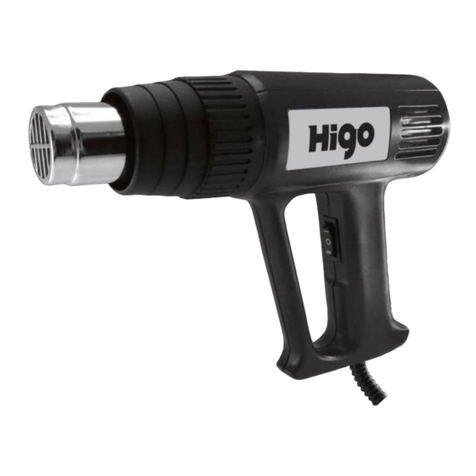
Higo
Higo HHG-2000 Translation of the original instruction manual
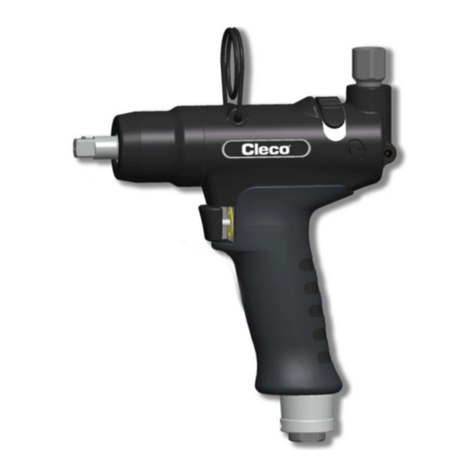
Cleco
Cleco 11PHH instruction manual
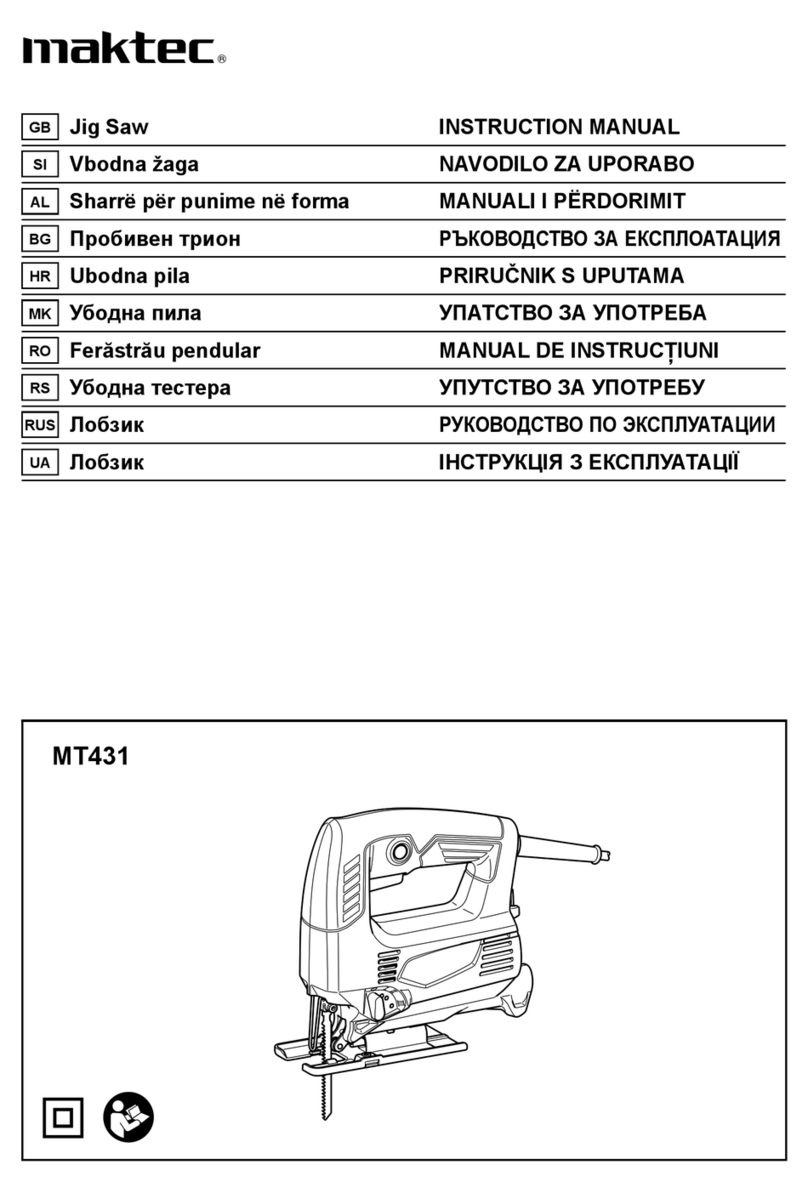
Maktec
Maktec MT431 instruction manual
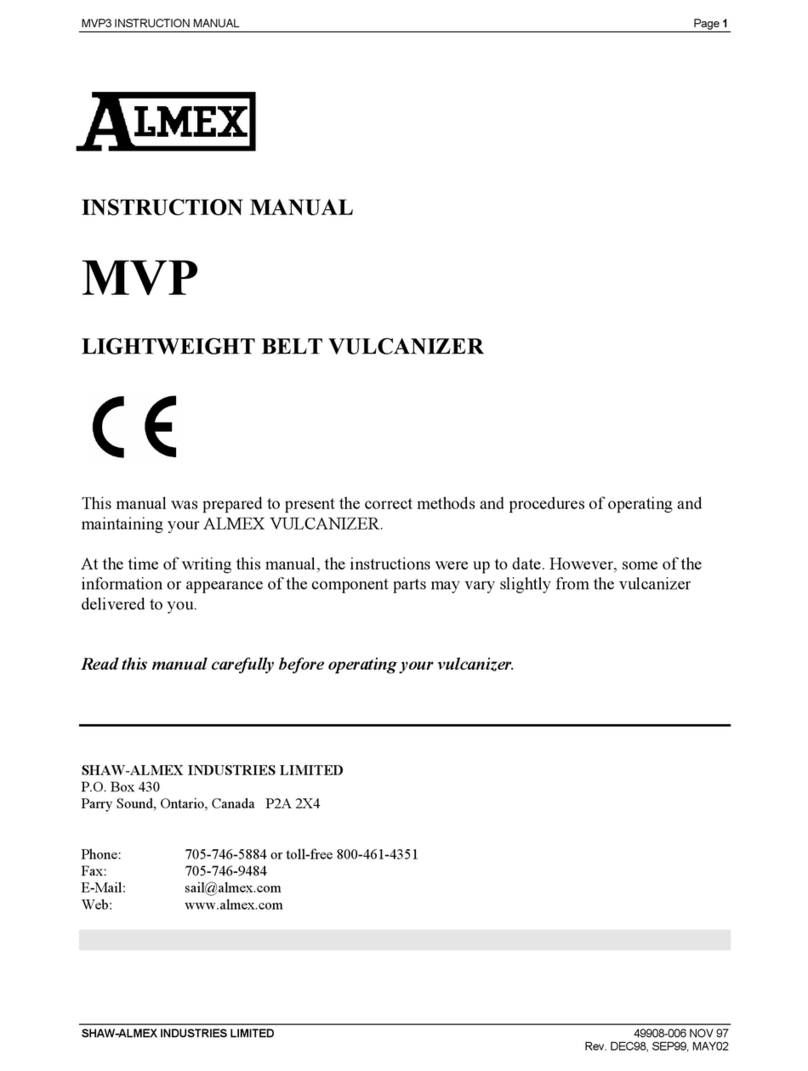
Almex
Almex MVP instruction manual

MK Diamond Products
MK Diamond Products MK-370 Owner's manual & operating instructions
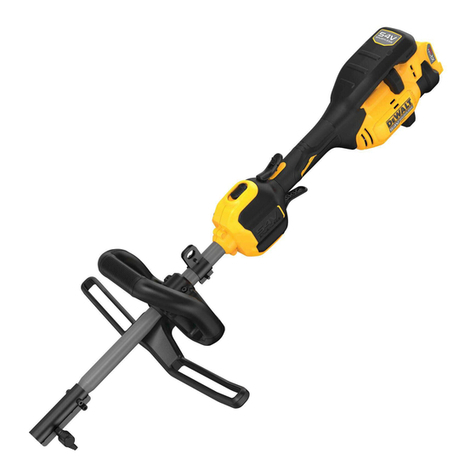
DeWalt
DeWalt XR LI-ION DCMAS5713 Original instructions

